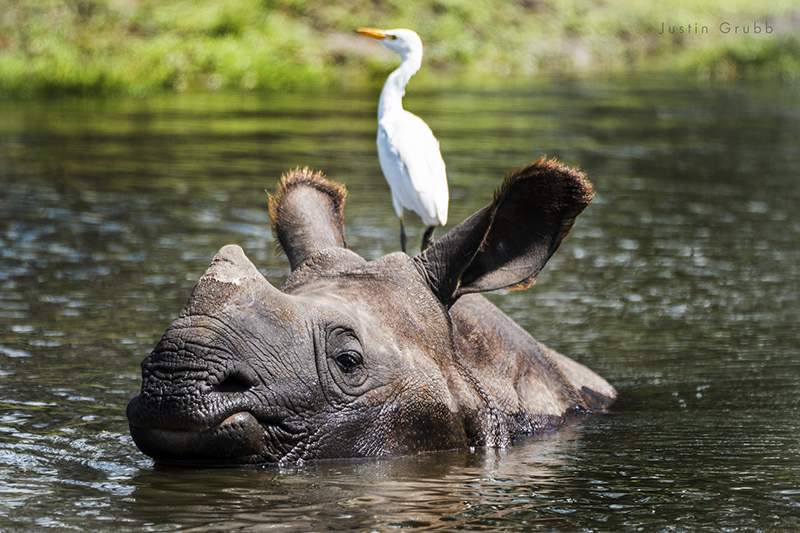The Indian, or greater one-horned rhino, has been classically described in literature and art for centuries. Known as the “plated rhino,” the Indian rhino has thick shields of skin that protect the rhino’s vital areas during fights with other rhinos. This rhino species lives in moist river valleys in India and Nepal, where it congregates in groups in the grassy meadows where they feed and in mud wallows and water holes to keep cool. The horn of the rhino is made of keratin, the same material that makes up human fingernails and hair. The horns are used in traditional Asian medicine to treat various ailments.
The once widespread Indian rhino was reduced to numbers as low as 100 animals by 1960, but due to conservation efforts and protection by wildlife officers in India and Nepal, their numbers are recovering. However, threats to the rhinos continue due to the ever-increasing demand for rhino horn in traditional Asian medicine markets. Also, greater one-horned rhinos live in areas with very fertile soil; people use the same land for farming purposes. Conflicts between humans and animals are inevitable and consequently damaging to the Greater one-horned rhino population.

In India, rhinos are being translocated from Kaziranga National Park to other parks in India, where rhinos were eliminated by poaching. The International Rhino Foundation and a host of conservation organizations support this work and the positive rhino conservation efforts being implemented by India’s government. Because of these efforts, the wild population of Indian rhinos is slowly growing.
There have been five Indian rhinos born at White Oak since 2011. Their 30-acre habitat with lakes, grasslands, and forests provide a great environment for our growing herd.
Learn More: Visit the International Rhino Foundation to learn about rhino conservation efforts.
